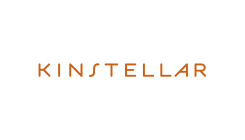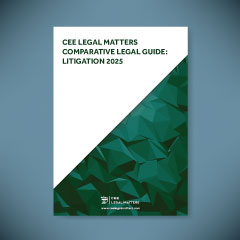Contributed by Kinstellar.
1. General Trends
1.1. What is the current state of litigation in your jurisdiction, and what recent trends or developments have been observed?
Ukrainian litigation has been evolving, particularly in light of reforms aimed at aligning with European Union standards. Notably, the establishment of the High Anti-Corruption Court in 2019 marked a significant step toward addressing corruption.
Despite the ongoing war, Ukraine’s judiciary continues to function, and the Ukrainian courts remain operational. Recently, two significant international agreements came into effect for Ukraine: i) the Hague Convention on Choice of Court Agreements, establishing rules for the recognition and enforcement of judgments based on exclusive jurisdiction clauses; and ii) the Hague Convention on the Recognition and Enforcement of Foreign Judgments in Civil or Commercial Matters, which simplifies the process of recognizing and enforcing foreign judgments among member states.
A notable trend in litigation is the rise in claims by those seeking compensation for damage caused as a consequence of Russia’s aggression against Ukraine. Individuals and businesses are increasingly filing claims to recover losses from destroyed property, lost profits, and other war-related damage.
Additionally, the Supreme Court has increasingly factored in applicable EU laws in its judgments, reflecting the trend toward European integration.
1.2. What are the key legal frameworks that regulate litigation?
Litigation in Ukraine is governed by four key procedural codes, each regulating distinct types of legal disputes, ensuring a comprehensive framework for justice:
i) the Civil Procedure Code of Ukraine, which governs civil disputes involving private rights and obligations, including family, labor, and land matters, and property disputes;
ii) the Commercial Procedure Code of Ukraine, which is focused on disputes involving business entities and regulates cases such as contractual breaches, corporate conflicts, bankruptcy proceedings, and other commercial matters;
iii) the Code of Administrative Proceedings of Ukraine, which addresses disputes arising from public law relationships. Typical cases include challenges against decisions, actions, or inactions of public authorities, disputes concerning legal elections or referendum process, the seizure of property for public needs, access to public information, etc.;
iv) the Criminal Procedure Code of Ukraine, which governs criminal investigations and trials, ensuring adherence to fair trial standards. The Code outlines the rights and obligations of parties involved, from pre-trial investigation to judicial proceedings and appeals.
Additionally, the Law of Ukraine “On the Judiciary and Status of Judges” provides the structural and functional framework for the judiciary.
2. Jurisdiction and Competence
2.1. How is the court system structured in your jurisdiction?
Ukraine has a three-tiered court system:
i) local courts (courts of first instance);
ii) courts of appeal (courts that review decisions from local courts);
iii) The Supreme Court, which is the highest judicial authority ensuring the uniform application of the law and which reviews cassation appeals on the decisions of the courts of appeal.
By specialization, local courts and courts of appeal courts are divided into:
i) general courts (specialized in civil and criminal cases, as well as certain administrative cases);
ii) commercial courts (specialized in commercial disputes under the Commercial Procedure Code);
iii) administrative courts (specialized in disputes arising from public law relationships).
In addition, there are 2 specialized courts: for corruption-related cases and intellectual property matters (see section 2.2 below).
In some cases, the courts of appeal, or even the Supreme Court, act as the courts of first instance. By way of example, administrative courts of appeal, as courts of first instance, handle cases involving the expropriation of land plots and related real estate for reasons of public necessity. General courts of appeal, as courts of first instance, consider cases on the recognition and enforcement of international commercial arbitration decisions. The Supreme Court, as a court of first instance, has jurisdiction over specific high-profile cases, including, inter alia, cases involving the determination of the results of elections or national referenda, and cases on appeals against acts, actions, or omissions of the Parliament or the President of Ukraine.
2.2. Are there specialized courts for specific types of litigation?
There are 2 specialized courts in Ukraine:
i) The High Anti-Corruption Court, which handles corruption-related cases; and
ii) The High Court of Intellectual Property
Both courts were introduced into the judicial system of Ukraine as part of the 2016 reforms. Both have an appellate chamber and are the courts of first and appellate instance for cases within their jurisdiction. Nevertheless, the High Court of Intellectual Property is still in the process of formation and therefore is yet to start performing its functions.
2.3. How is jurisdiction determined in cross-border litigation, especially in cases involving foreign parties or multiple jurisdictions?
The rules of international jurisdiction are contained in international treaties of Ukraine and the Law of Ukraine “On Private International Law” (the PIL Law).
The PIL Law provides a number of cases when the Ukrainian courts have the authority to hear disputes involving a foreign element (i.e., foreign party, foreign assets, or legal fact that took place in a foreign state), as well as cases when the jurisdiction of the Ukrainian courts is exclusive, and, accordingly, violations will result in the non-recognition of a foreign court decision on the same matter in Ukraine.
In general, the authority of the Ukrainian courts to hear cases involving foreign element(s) comes down to the existence of agreements between the parties on the jurisdiction of the Ukrainian courts or where the case is connected with Ukraine to some degree (e.g., the respondent is resident in Ukraine, the property that can be enforced is located in Ukraine, the damages claimed have been caused in Ukraine, etc.). The exclusive jurisdiction of the Ukrainian courts covers, inter alia, the following cases: the real estate in dispute is located on the territory of Ukraine; in bankruptcy cases, the debtor was established in accordance with the laws of Ukraine; the case concerns the issue or destruction of securities issued in Ukraine; the dispute is concerned with the registration or liquidation of foreign entities in Ukraine.
However, if an international treaty establishes the rules of international jurisdiction other than the PIL Law, the international treaty will apply.
If, in accordance with the rules of international jurisdiction, a dispute with a foreign element falls under the jurisdiction of the Ukrainian courts, the rules of domestic jurisdiction are applied to determine the specific Ukrainian court authorized to hear the case. Such rules of domestic jurisdiction for civil and commercial disputes are contained in the respective procedural codes (see section 1.2 above) and generally focus on factors such as the defendant’s domicile and the location of the subject matter.
3. Initiating Litigation
3.1. What are the primary steps required to initiate litigation in your jurisdiction?
To initiate litigation, the claimant must pay court fees and submit a statement of claim to the appropriate court.
Generally, a statement of claim must include such essential information as the court’s and respective parties’ details, a calculation of the amount claimed (where applicable), a statement of the factual circumstances of the case, and the grounds for the claim along with the supporting evidence.
No general requirements apply with respect to specific primary steps required to initiate court proceedings, such as mandatory pre-litigation settlement procedures, etc. Still, there may be some technical requirements with which the claimant should comply in order to be able to initiate court proceedings. In particular, the claimant, as well as its representative(s) should have a registered account within the nationwide electronic court system. Also, some special requirements (including mandatory pre-trial settlement) may be applicable to specific matters under special laws applicable to the same, including international treaties.
3.2. Are there any specific requirements for parties regarding pre-litigation procedures?
As a general rule, pre-litigation procedures are not mandatory and are not required to initiate court proceedings under the laws of Ukraine. At the same time, if such procedures are envisaged by special laws applicable to specific matters, including international treaties, compliance is necessary. Otherwise, the court can return a statement of claim without consideration.
4. Timelines
4.1. What are the typical timelines for different stages of litigation, from initiation to resolution?
In terms of civil and commercial cases, the typical timelines are as follows.
Once the statement of claim is received by the court it will carry out an assessment and decide on the opening of the proceedings within five days of the date of receipt of the claim.
Subsequently, preparatory work will be undertaken and a consideration of the case on its merits should begin no later than 60 days from the date of commencement of the proceedings. Consideration on merits should not last longer than 30 days and the resolution should be made immediately after the end of the trial.
Court decisions come into force after the expiry of the term for an appeal or (if an appeal is filed) after the end of the appeal proceedings.
For the timelines for appeal and cassation proceedings, please see section 8 below.
It should be noted, however, that such legally mandated timelines are rarely met in practice. The actual duration of litigation in general, as well as its specific stages, may vary significantly taking from several months to several years. This is, inter alia, due to the high workload of the courts.
4.2. Are there specific time limits for filing claims, and do these vary depending on the type of dispute?
The general limitation period for civil and commercial claims is three years from the day the claimant found out or could have found out about the respective violation of his/her/its rights or about the person who violated them. Special limitation periods are established by law for specific types of claims and may be either shorter or longer than the general limitation period.
For instance, a one-year limitation period applies to the following claims:
1) Recovery of penalties.
2) Refuting inaccurate information published in the media.
3) The transfer of rights and obligations of a buyer to a co-owner in cases of violations of the pre-emptive right to purchase a share in a joint ownership.
4) Claims arising from defects in goods sold.
5) Termination of a gift agreement.
6) Claims related to the carriage of cargo and mail.
7) Appeals against the actions of the executor of a will.
8) Claims to invalidate resolutions of a company’s general shareholders’ meeting.
On the other hand, a four-year limitation period applies to claims for the recognition of assets as unjustified and their recovery for the benefit of the state.
Limitation periods established by law can be extended, but not shortened, by the mutual agreement of the parties in writing.
5. Interim Measures
5.1. What interim remedies are available in your jurisdiction?
In Ukraine, under civil and commercial procedures the court may take the following interim measures to secure a claim:
1) The seizure of property and/or funds belonging to the defendant or subject to transfer/payment to the defendant and held either by the defendant or by other parties.
2) The seizure of the assets in dispute or other equivalent assets of the defendant – this applies only to cases of the recognition of assets as unjustified and their recovery for the benefit of the state.
3) Prohibiting respondents from performing certain actions.
4) Third-party restrictions: prohibiting other persons from taking actions in relation to the subject matter of a dispute or making payments, transferring property to the defendant, or fulfilling other obligations in relation to the defendant.
5) Establishing an obligation to take certain actions – this applies to disputes arising from family legal relations.
6) The suspension of property sales, which is applicable when the claim seeks the recognition of property ownership and the reversal of the respective assets’ seizure.
7) The suspension of debt recovery under an enforcement document.
8) The suspension of customs clearances.
9) The impounding of a sea vessel to secure maritime claims.
The courts may take several interim measures at the same time.
5.2. Under what circumstances can a party obtain an interim injunction, and how quickly can such relief be granted?
Interim relief may be granted by a court only upon the application of a party to the dispute. The applicant must demonstrate that a failure to take such measures may significantly complicate or make it impossible to enforce a court decision or to effectively defend or restore the violated or disputed rights of the claimant. Interim measures must be reasonable, valid, and directly related to the given claim. They should balance the interests of both parties and be adequate to the situation.
An application for interim relief may be filed with the court either before or after filing a statement of claim. If an application is submitted before filing a claim, the latter should be filed with the court within 10 days. In both cases, the application should be considered by the court not later than two days from the date of its receipt, without notifying the parties to the case.
6. Discovery
6.1. What are the rules governing the discovery process in your jurisdiction?
Ukraine follows a civil law system with a very limited document production procedure. The parties themselves are responsible for presenting evidence. The general rule is that the court may not collect evidence at its own initiative. The courts can request additional evidence, if necessary, upon an application by any party. The application should be highly specific, which typically significantly restricts the parties in this regard.
6.2. What types of evidence can be requested, and how are discovery disputes resolved?
As noted in section 6.1 above, Ukraine does not have a specific discovery procedure. At the same time, if a party to a case is unable to provide evidence on its own, it may file an application to have the evidence requested by the court. Such an application must be specific and must, inter alia, include: i) a description of the evidence being requested; ii) the circumstances the evidence may confirm or the arguments it may refute; iii) the grounds for believing a particular person possesses this evidence; iv) details of efforts made to obtain the evidence independently, proof of such efforts, or reasons why obtaining it independently was not possible. It is up to the court to decide whether the requested evidence is relevant to the case and whether its disclosure/production should be ordered.
6.3. How is evidence presented and evaluated during litigation?
All the parties submit evidence directly to the court with their first statement on the merits of the given dispute, i.e. claimants submit evidence with the statement of a claim, and defendants and third parties without independent claims submit evidence with the statement of defense or written explanations respectively.
The court evaluates evidence based on the need for a thorough and objective review of all case materials. No evidence is given automatic weight; the court independently assesses its relevance, admissibility, reliability, and how it connects with other evidence in the given case.
7. Enforcement of Judgments
7.1. What types of judgments can be issued in civil litigation, and how are they enforced?
In civil and commercial proceedings, the main types of judgments are: i) rulings; ii) decisions; and iii) resolutions. Via rulings, the courts resolve procedural issues related to the progress of a case in court and do not decide on the merits of the case. A decision is the final judgment of a trial court on the merits of the case. Resolutions are made on the basis of a review of court decisions on appeal and cassation.
Enforcement is carried out by the State Enforcement Service or private enforcers on the basis of an enforcement writ issued by the respective court. The writ can be submitted for enforcement within the term stated therein, generally – 3 years. In terms of completing enforcement proceedings, the timeframe is not fixed by law and depends on the specific circumstances of each case.
The enforcers submit requests to the relevant authorities and institutions, check databases and registers, and verify the debtor’s property status to determine the debtor’s assets. Once the assets are identified, they are immediately seized. Typically, the material assets are then sold at auctions, with the proceeds used to satisfy the debt.
7.2. Are there specific provisions for cross-border litigation or enforcement of foreign judgments?
Foreign court judgments must be additionally recognized in Ukraine and their enforcement must be permitted by a Ukrainian court.
Foreign court judgments are recognized and enforced in Ukraine:
1) if their recognition and enforcement are provided for by an international treaty; or
2) on the principle of reciprocity, which is assumed unless proven otherwise.
A foreign court judgment may be submitted for enforcement in Ukraine within three years from the date of its entry into force, except for a judgment on the recovery of periodic payments, which may be enforced throughout the entire period of recovery with the debt repaid over the last three years.
Ukrainian courts may refuse recognition and enforcement of a foreign court judgment under certain circumstances, including, inter alia, the following:
1) The foreign court judgment has not become legally effective according to the laws of the country where it was issued.
2) The party against whom the judgment was made was not properly notified and thus could not participate in the judicial process.
3) The judgment was rendered in a matter that falls under the exclusive jurisdiction of the Ukrainian courts or another authorized Ukrainian body.
4) The judgment is submitted for enforcement in Ukraine beyond a three-year term from the date it became effective.
5) The enforcement of the judgment would threaten the interests of Ukraine.
In 2022, Ukraine ratified the Hague Convention on the Recognition and Enforcement of Foreign Judgments in Civil or Commercial Matters. The Convention entered into force in Ukraine on September 1, 2023, greatly simplifying the process for recognizing and enforcing foreign court judgments from other parties to the Convention within Ukraine.
8. Appeal
8.1. What is the appeals process, and what are the grounds for appeal in your jurisdiction?
A judgment of the court of first instance may be appealed to the court of appeals. Under the civil procedure, court decisions can be challenged within 30 days, while court rulings must be appealed within 15 days. Under the commercial procedure, there are only 20 days to appeal against court decisions and 10 days to appeal against rulings. These terms may be extended by the court if they are missed for certain valid reasons.
The grounds for appeal include the violation of substantive and/or procedural law by the court of first instance, such as i) a failure to fully establish important case facts, ii) errors in evaluating or accepting evidence, ii) improper rejection of valid evidence, iii) an incorrect interpretation of legal relationships by the court.
The court of appeal must check the statement of appeal and decide whether to open appeal proceedings within five days upon receipt of the statement of appeal. After opening the proceedings, the court has 60 days to consider on its merits the appeal against the trial court’s decision, and 30 days to consider appeals against a trial court’s ruling.
After an appellate review of a case, decisions and rulings by the courts of first instance, as well as resolutions and rulings by courts of appeal can be appealed to a court of cassation within a 30-day period under the civil procedure, or 20 days under the commercial procedure. These terms may be extended by the court if they are missed for certain valid reasons.
The grounds for filing a cassation appeal are limited to the incorrect application of substantive law or violations of procedural law.
The court of cassation must check the statement of appeal and decide whether to open appeal proceedings within 20 days upon receipt of the statement of cassation. After opening the proceedings, the court has from 30 to 60 days to consider the cassation appeal on its merits, depending on the type of judgment subject to an appeal.
9. Costs and Funding
9.1. How are legal costs determined, and what are the common practices regarding funding litigation?
In Ukraine, legal costs include court fees, legal expenses, and expert costs, which are typically borne by the losing party. Litigation funding, where a third-party finances legal proceedings in exchange for the awarded sum, is not a common practice in Ukraine. Parties generally fund their own litigation expenses.
9.2. Are there alternative funding options available for parties involved in litigation?
Please see section 9.1 above. Additionally, in some cases, parties may access alternative funding options, including legal assistance from a state-appointed lawyer. This service is provided free of charge to qualifying individuals, ensuring access to justice for those who cannot afford private legal representation.
10. International Treaties
10.1. How do international treaties or regional agreements impact litigation in your jurisdiction?
International treaties and regional agreements play a significant role in litigation in Ukraine. They hold a higher legal authority than national laws, and courts must apply treaty provisions directly when they conflict with domestic laws.
The Hague Conventions, which Ukraine joined on August 1, 2023, significantly enhanced the efficiency of cross-border dispute resolution. The Convention on the Recognition and Enforcement of Foreign Judgments in Civil or Commercial Matters simplifies the enforcement of foreign court decisions among member states, reducing procedural barriers. Meanwhile, the Convention on Choice of Court Agreements provides a clear framework for recognizing and enforcing judgments based on exclusive jurisdiction agreements. With Ukraine’s accession to these Conventions, cross-border dispute resolution has undoubtedly become more efficient.
Furthermore, Ukraine continues aligning its judiciary with EU standards under the EU-Ukraine Association Agreement, with Ukrainian courts increasingly referencing European legal principles and case law when hearing cases.





